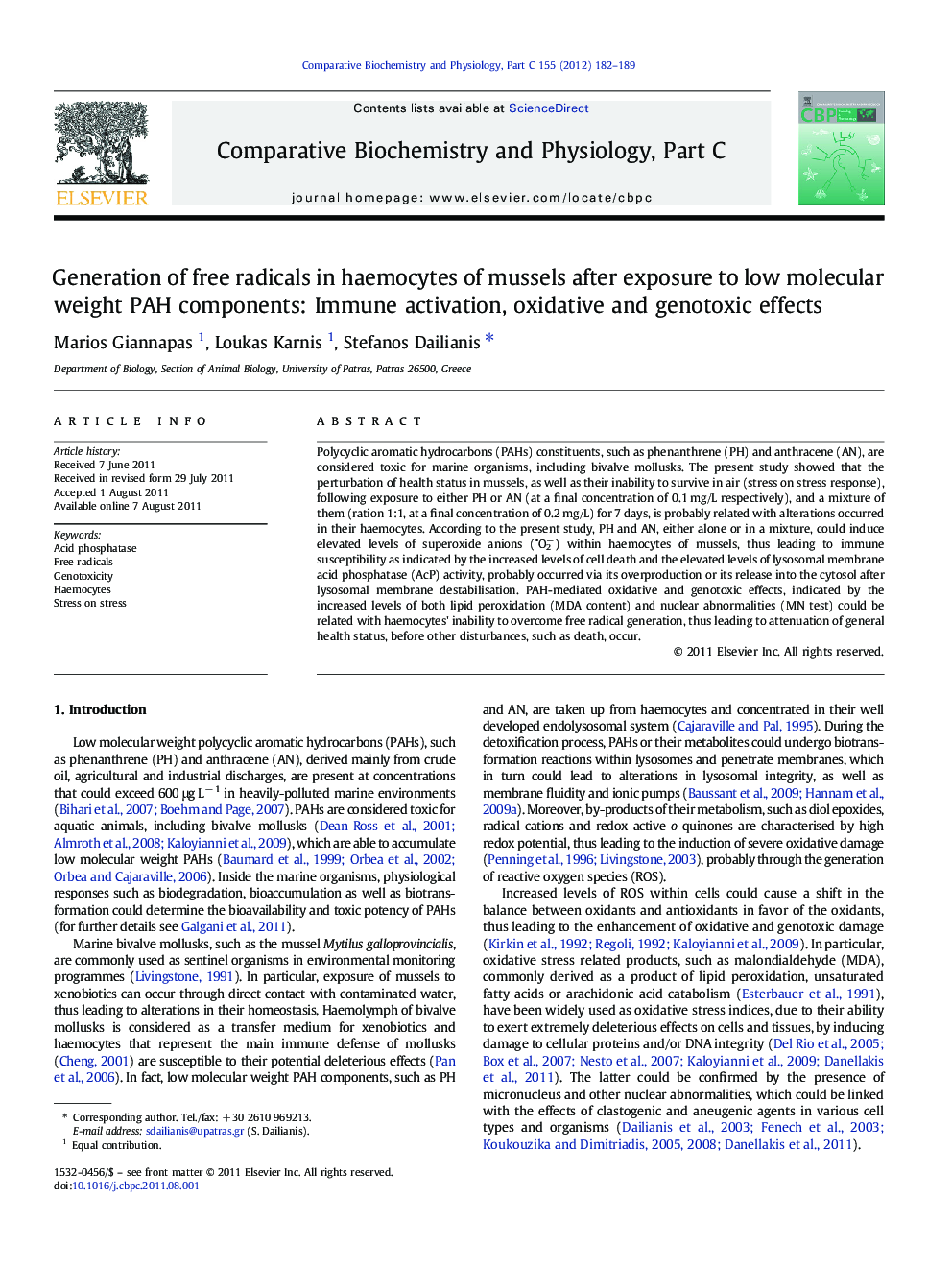| Article ID | Journal | Published Year | Pages | File Type |
|---|---|---|---|---|
| 10821655 | Comparative Biochemistry and Physiology Part C: Toxicology & Pharmacology | 2012 | 8 Pages |
Abstract
Polycyclic aromatic hydrocarbons (PAHs) constituents, such as phenanthrene (PH) and anthracene (AN), are considered toxic for marine organisms, including bivalve mollusks. The present study showed that the perturbation of health status in mussels, as well as their inability to survive in air (stress on stress response), following exposure to either PH or AN (at a final concentration of 0.1Â mg/L respectively), and a mixture of them (ration 1:1, at a final concentration of 0.2Â mg/L) for 7Â days, is probably related with alterations occurred in their haemocytes. According to the present study, PH and AN, either alone or in a mixture, could induce elevated levels of superoxide anions (
- O2â) within haemocytes of mussels, thus leading to immune susceptibility as indicated by the increased levels of cell death and the elevated levels of lysosomal membrane acid phosphatase (AcP) activity, probably occurred via its overproduction or its release into the cytosol after lysosomal membrane destabilisation. PAH-mediated oxidative and genotoxic effects, indicated by the increased levels of both lipid peroxidation (MDA content) and nuclear abnormalities (MN test) could be related with haemocytes' inability to overcome free radical generation, thus leading to attenuation of general health status, before other disturbances, such as death, occur.
- O2â) within haemocytes of mussels, thus leading to immune susceptibility as indicated by the increased levels of cell death and the elevated levels of lysosomal membrane acid phosphatase (AcP) activity, probably occurred via its overproduction or its release into the cytosol after lysosomal membrane destabilisation. PAH-mediated oxidative and genotoxic effects, indicated by the increased levels of both lipid peroxidation (MDA content) and nuclear abnormalities (MN test) could be related with haemocytes' inability to overcome free radical generation, thus leading to attenuation of general health status, before other disturbances, such as death, occur.
Related Topics
Life Sciences
Biochemistry, Genetics and Molecular Biology
Biochemistry
Authors
Marios Giannapas, Loukas Karnis, Stefanos Dailianis,
